Collecting artifacts and stories
Adding visitors' stories and artifacts to the formulated exhibition framework
Story 1.
We disseminated a mass of А5 flyers with the appeal to contribute to exhibition content in the Museum subsidiaries, Central city library after V.G, Belinsky, some travel agencies.
In terms of stories and artifacts obtained the result equaled zero. In terms of promotion and project perception this action was some success. At least some people told us that they had learnt about the exhibition from these flyers.
We disseminated a mass of А5 flyers with the appeal to contribute to exhibition content in the Museum subsidiaries, Central city library after V.G, Belinsky, some travel agencies.
In terms of stories and artifacts obtained the result equaled zero. In terms of promotion and project perception this action was some success. At least some people told us that they had learnt about the exhibition from these flyers.

Story 2.
Collecting photos and stories for "What surprised you on a journey" was more productive. Materials were contributed via social networks and the largest city web forum E1. Our Vkontakte group called out citizens "to share", we also posted a model photo text. One of the exhibition "test-drive" visitors who was longing to join was extremely helpful (more about it in section 3.8). She knew a lot of people and the task was easily done. We picked up over 50 enticing photos and stories which later entered the exposition space.
Collecting photos and stories for "What surprised you on a journey" was more productive. Materials were contributed via social networks and the largest city web forum E1. Our Vkontakte group called out citizens "to share", we also posted a model photo text. One of the exhibition "test-drive" visitors who was longing to join was extremely helpful (more about it in section 3.8). She knew a lot of people and the task was easily done. We picked up over 50 enticing photos and stories which later entered the exposition space.

Candles with bulbs amazed me. You throw a coin and a bulb comes on. Quite modern.
Arkhipova Yuliya.
Arkhipova Yuliya.
This way of mustering stories was applied to the project "Find yourself in Nakhodka", the 2012 winner of the "Changing museum in Changing world" contest.
Nakhodka refers to "new cities" category established after the World War II. Looking very much like one another such cities try to shape their identity and features characteristic solely of them. The project organized a platform to dwell on ways people had managed to "find and still finding themselves" in their native city.
The museum asked citizens to provide an individually important document or thing that made them aware of their being a Nakhodka resident, to talk about the event that had determined their decision to choose this city for settlement, etc.
In exchange for exhibit donations a guest received a bar of «Primorsky Confectioner» chocolate. The ceremony was recorded, and a donator filled in an exhibit card.
The artifacts collected allowed the museum to prepare a new exposition opened before The Day of City where visitors could also meet the exposition characters [1].
Nakhodka refers to "new cities" category established after the World War II. Looking very much like one another such cities try to shape their identity and features characteristic solely of them. The project organized a platform to dwell on ways people had managed to "find and still finding themselves" in their native city.
The museum asked citizens to provide an individually important document or thing that made them aware of their being a Nakhodka resident, to talk about the event that had determined their decision to choose this city for settlement, etc.
In exchange for exhibit donations a guest received a bar of «Primorsky Confectioner» chocolate. The ceremony was recorded, and a donator filled in an exhibit card.
The artifacts collected allowed the museum to prepare a new exposition opened before The Day of City where visitors could also meet the exposition characters [1].

On the whole, this idea is similar to the idea of Pop Up Museum in the format Santa Cruz Museum of Art & History (MAH) is developing [2].
In MAH curators view, the Pop Up Museum is a temporary exhibit created by the people who show up to participate. It works by choosing a theme and venue and then inviting people to bring an object on-topic to share. Participants write a label for their object and leave it on display. A Pop Up Museum usually lasts a few hours on one day. Popping up in unorthodox arts spaces, like libraries or laundromats, Pop Up Museums focus on bringing people together in conversation through stories, art, and objects [3].
In MAH curators view, the Pop Up Museum is a temporary exhibit created by the people who show up to participate. It works by choosing a theme and venue and then inviting people to bring an object on-topic to share. Participants write a label for their object and leave it on display. A Pop Up Museum usually lasts a few hours on one day. Popping up in unorthodox arts spaces, like libraries or laundromats, Pop Up Museums focus on bringing people together in conversation through stories, art, and objects [3].
MAH grand expositions attracting local community collections and stories are not less interesting. Let have a look at "Santa Cruz collects" exhibition.
"We collaborated with community members to source content and develop the show. This is an exhibition built from community members' stuff. We did a series of call-outs to find intriguing collectors. Sometimes, we'd hear something vague about a guy with great branding irons or a lady who showed wild stuff at the county fair. We tracked down as many people as we could and developed a big spreadsheet so we could evaluate the possibilities. We wanted diversity along several axes--stories, types and sizes and scales of collections, perception of value, age of collector, gender, and geographic home base of collector. We were fortunate to have an in-house team with varied attention; while I cared most about the stories behind the collecting, our art curator Susan fixated on aesthetics of the objects, and our history curator Marla focused on novelty, diversity of county representation, and whether people were calling us back. Because we wanted a really clean design and a personal feel, we interviewed all the collectors to capture their stories, creating labels that blended their first-person quotes with our curatorial commentary about the "why" behind their collecting. A stellar volunteer photographer, Tony Grant, took a portrait of each collector in his/her element. While some collectors had us select and design the displays of their objects, others collaborated with us to create their areas, adding their own unique quirks (like putting hats on computers to personalize them).
We worked with volunteers and interns again to create soundscapes that focused on collecting. One volunteer captured stories at the flea market; another asked people on the street about the memories they would keep (to accompany the Memory Jars).
We worked co-creatively with a group of anthropologists and archaeologists from UCSC to produce a small exhibition on the 3rd floor based on a pre-existing exhibition they had created about how they encounter and work with objects in their global research. We agreed to take the artifacts from their original show but worked with them to rewrite labels and shift the focus to be more personal and in-line with the Santa Cruz Collects big idea. This was a partnership that involved meaty dialogue to get to a shared success; it was important to the anthropologists that we not present fallacious images of them as "collectors" or antiquity hunters, and it was important to us to show the human side of why they work with particular objects" [4].
We worked with volunteers and interns again to create soundscapes that focused on collecting. One volunteer captured stories at the flea market; another asked people on the street about the memories they would keep (to accompany the Memory Jars).
We worked co-creatively with a group of anthropologists and archaeologists from UCSC to produce a small exhibition on the 3rd floor based on a pre-existing exhibition they had created about how they encounter and work with objects in their global research. We agreed to take the artifacts from their original show but worked with them to rewrite labels and shift the focus to be more personal and in-line with the Santa Cruz Collects big idea. This was a partnership that involved meaty dialogue to get to a shared success; it was important to the anthropologists that we not present fallacious images of them as "collectors" or antiquity hunters, and it was important to us to show the human side of why they work with particular objects" [4].
Не менее интересен и опыт MAH в реализации больших экспозиций, основанных на коллекциях и историях местного сообщества. Сошлемся здесь на опыт создания выставки «Что собирает Санта-Крус».
Story 3.
Our communication with visitors during the first hall of the "test drive" appeared to be very productive. We were not telling people what to do, we were asking questions, encouraging them to share their experiences (more about it in section 3.8). This may be the easiest way to make people engaged. Any curator can plan a display with empty show window so that will-be- visitors could stuff them with their artifacts.
We will dwell on it more in section 3.9
Story 3.
Our communication with visitors during the first hall of the "test drive" appeared to be very productive. We were not telling people what to do, we were asking questions, encouraging them to share their experiences (more about it in section 3.8). This may be the easiest way to make people engaged. Any curator can plan a display with empty show window so that will-be- visitors could stuff them with their artifacts.
We will dwell on it more in section 3.9
Introduction
1. The idea
2. Tools
3. A long journey
3.1. Community participation
3.2. Viewers' involvement
3.3. A move towards people
3.4. Collecting artifacts and stories
3.5. Viewers – co-authors in copy-writing
3.6. Collaborative exposition design
3.7. Testing
3.8. Participatory zones
3.9. Exhibition catalogue in 2.0. format
3.10. Participants and co-authors motivation
4. Research on the world of travel
4.1. Origins of geobiography
4.2. Roads we choose
4.3. Make up your mind!
4.4. To discover the world
4.5. To ignite others
5. Perception
Results (Visitors' social portrait, Visitors satisfaction level and underlying factors, The respondents' assessment of the project concept innovation, Visitors' assessment of separate exhibition halls)
Acknowledgements
1. The idea
2. Tools
3. A long journey
3.1. Community participation
3.2. Viewers' involvement
3.3. A move towards people
3.4. Collecting artifacts and stories
3.5. Viewers – co-authors in copy-writing
3.6. Collaborative exposition design
3.7. Testing
3.8. Participatory zones
3.9. Exhibition catalogue in 2.0. format
3.10. Participants and co-authors motivation
4. Research on the world of travel
4.1. Origins of geobiography
4.2. Roads we choose
4.3. Make up your mind!
4.4. To discover the world
4.5. To ignite others
5. Perception
Results (Visitors' social portrait, Visitors satisfaction level and underlying factors, The respondents' assessment of the project concept innovation, Visitors' assessment of separate exhibition halls)
Acknowledgements
